Email marketing is still one of the most effective marketing channels for businesses. It is a highly reliable way to engage their customers. Even with new digital marketing platforms coming out every day, email offers a unique mix of reach, personalization, and cost efficiency that other channels struggle to match.
To maximize your impact with email, you need to know the latest statistics and more importantly: how to apply them to your business.
Keep reading to learn the 13 B2B email marketing statistics that every marketer should know, plus how to use them to improve your strategy.
Marketing Statistics in 2024
1. Most consumers (60%) prefer companies to send them marketing communications via email.
Source: Square Future of Commerce report
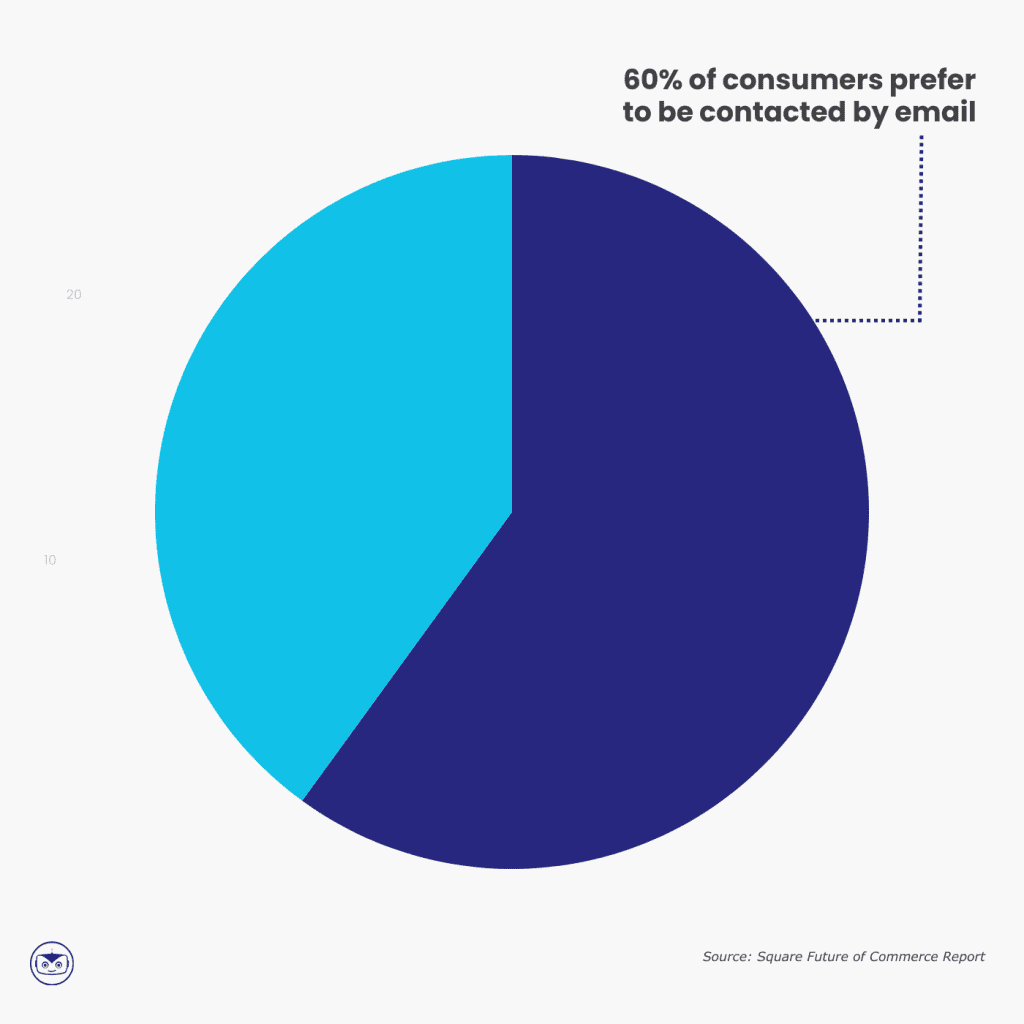
Email remains the preferred communication channel. This preference shows the enduring power of email marketing and how marketers using email can have the upper hand on reach and conversion.
Focus on creating personalized content. With an email list segmentation, you can send tailored offers and content to your audience. This can reduce your unsubscribe rate and increase your conversion rate.
2. Email marketing is used by 31% of marketers.
Source: HubSpot Blog Research, 2023
“If email is so great, why don’t more marketers use it?” Despite only 31% of marketers actively using email marketing, those who do often see a higher return on investment than other channels.
Businesses that integrate these tactics get to…
- Build stronger relationships with their audience;
- Get a higher conversion rate;
- Increase client retention;
Like other marketing channels, building an effective email list takes time and effort. Many businesses and marketers don’t have the resources (time, budget or knowledge) to invest in email marketing.
Finding an email marketing solution that fits your needs is essential. For Canadian businesses that also means working with a company that understands and helps you comply with Canada’s data privacy and anti-spam legislation, like Cyberimpact.
3. The average open rate is 42% (an increase of 2.48% compared to 2022).
Source: Cyberimpact’s State of Email Marketing Report
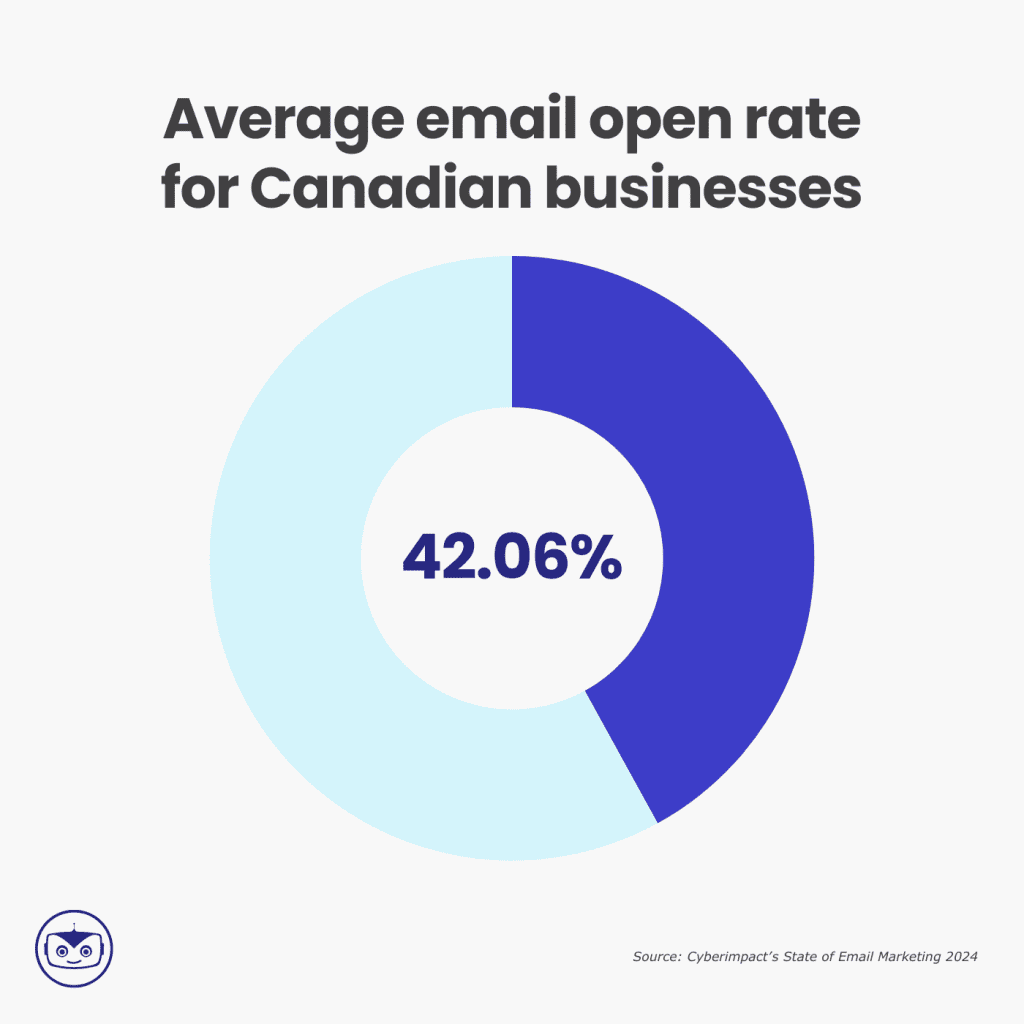
A 42% open rate shows that email marketing is still very effective, especially when marketers leverage best practices like segmentation and personalization. This increase over 2022 demonstrates that consumers are still interested in engaging with emails—when they find them relevant.
To capitalize on this data, write compelling subject lines that catch your audience’s attention.
Learn other essential email marketing statistics from 10,000 Canadian marketers on the State of Email Marketing Report.
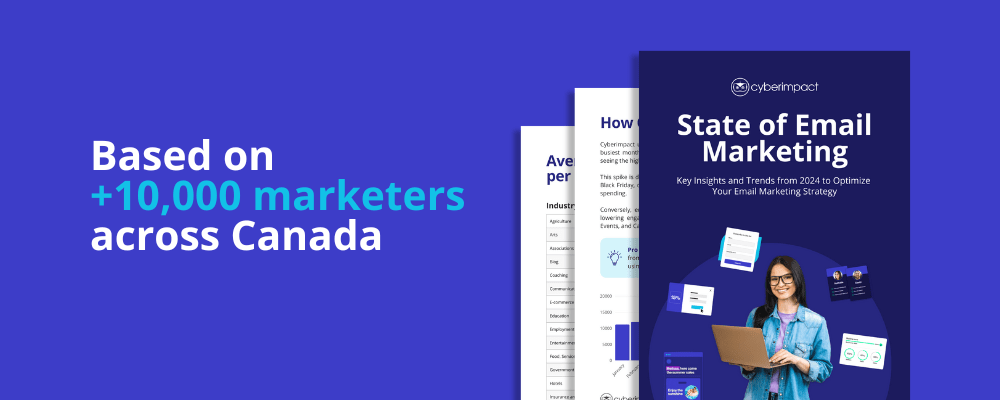
4. Tuesdays are the best days to send an email for the highest performance, Sundays are the worst.
Source: HubSpot Blog Research, 2023
Sending emails on the right day can significantly impact their performance. According to HubSpot, Tuesdays are generally the most effective day, while Sundays are the least.
However, after reviewing data from over 10,000 Canadian businesses and marketers, we have found that Thursdays are the most popular day for email sends.
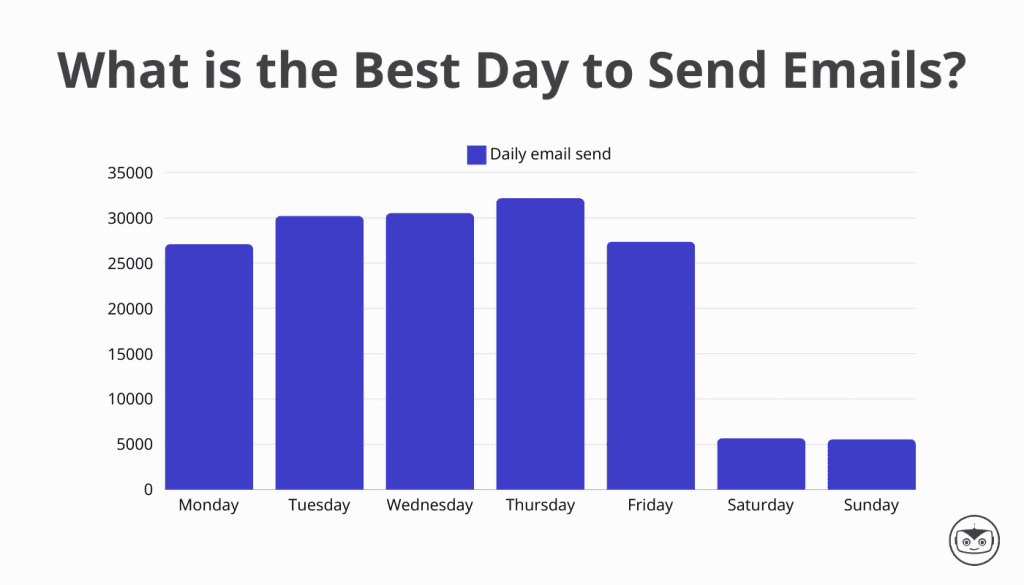
Test different send days to find when your audience is most responsive. By knowing who your target audience is you can understand their routine and how you insert your communications into that schedule.
If your email subscribers check their email first thing in the morning, send emails before they wake up. Segment your audience based on their past behaviour and use automation to schedule your campaigns at the best time.
5. Email is the third-highest-owned media platform B2B marketers used to distribute content in the past 12 months.
Source: Content Marketing Institute, 2022
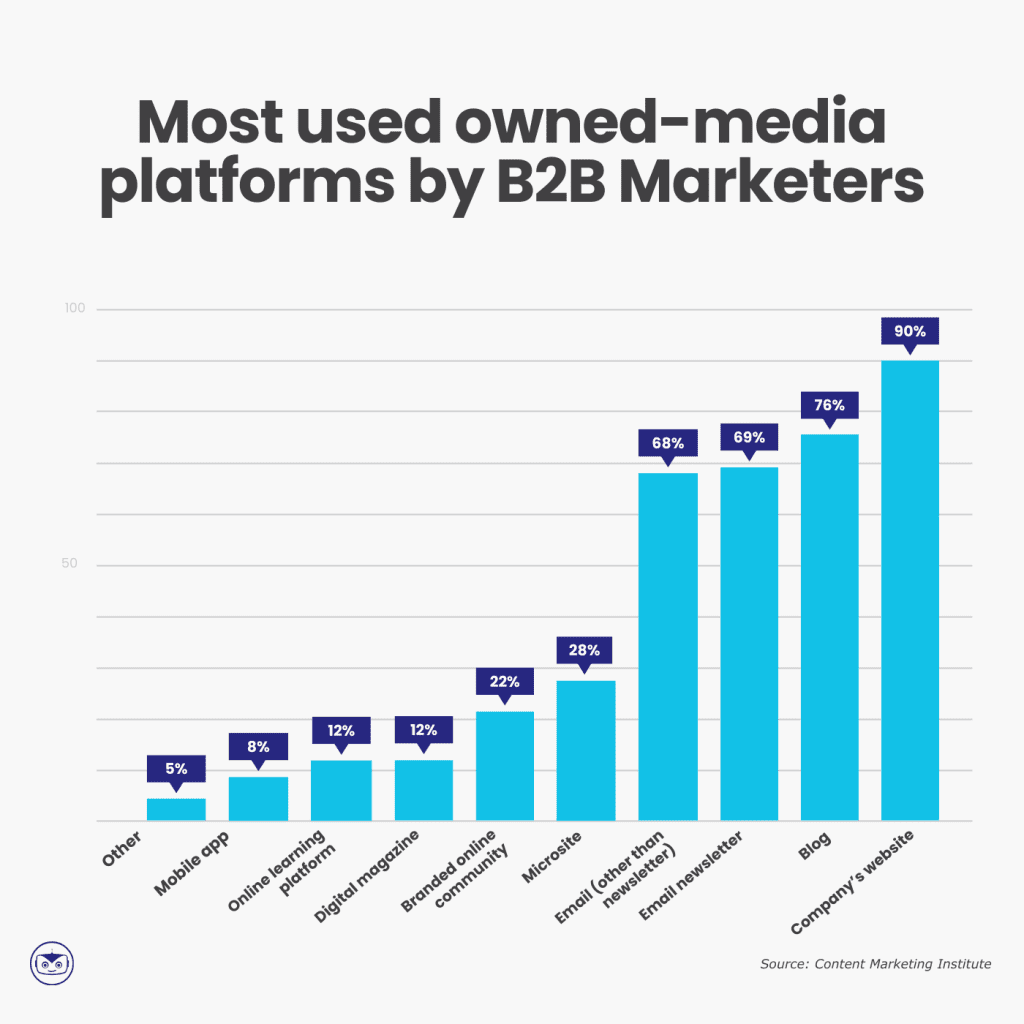
Email is a critical tool for B2B marketers, ranking as the third most-used channel for content distribution. This is because email allows for direct communication with decision-makers and stakeholders in a highly personalized manner.
6. 55% of emails are opened on mobile devices.
Source: eMarketer, 2023
With over half of emails being opened on mobile devices, businesses must ensure their email campaigns are mobile-friendly. A bad mobile experience can lead to immediate deletions and unsubscribes. Therefore, every element of your email—from the subject line to the CTA—must be optimized for mobile users.
7. 50% of people buy from marketing emails at least once per month.
Source: Salecycle, 2022
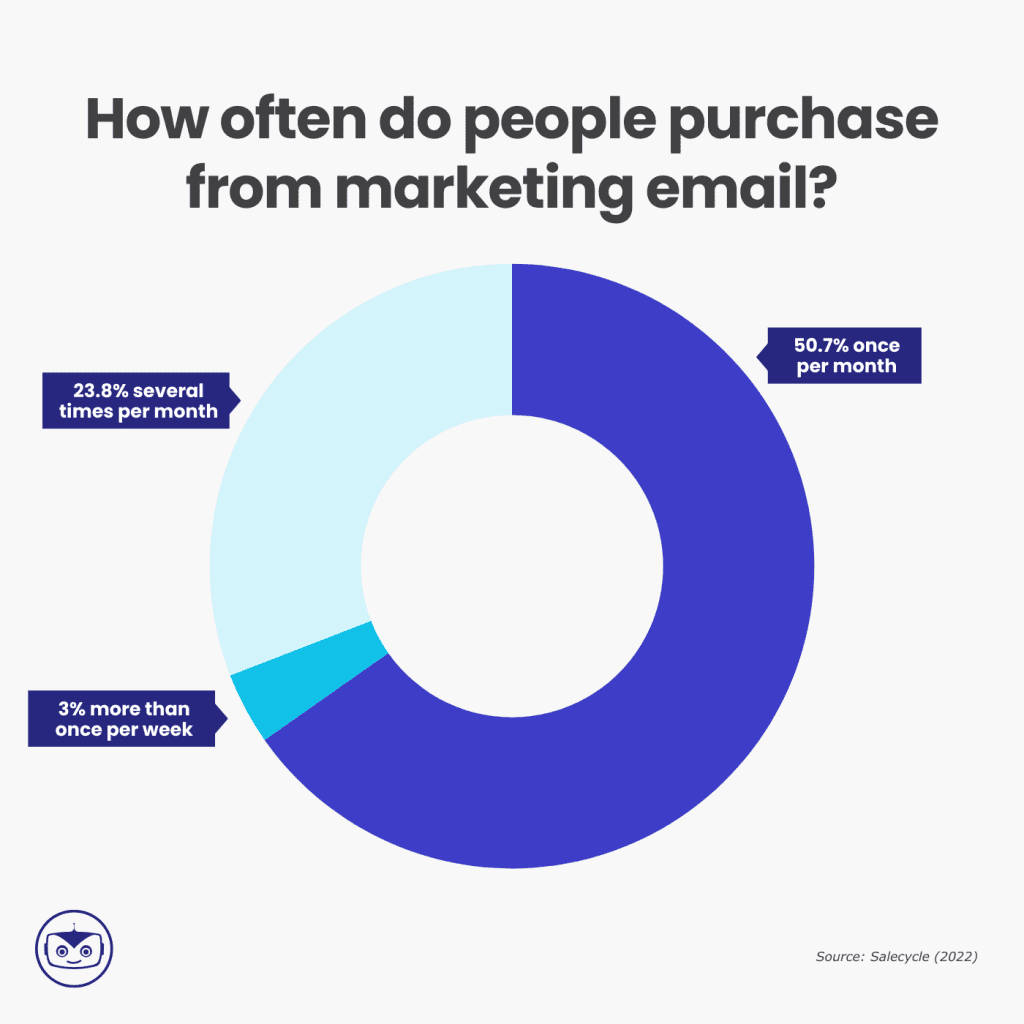
This statistic shows the potential of email marketing as a direct sales channel. To increase sales through email marketing, businesses should focus on personalization. Use data from past purchases and browsing behaviour to create tailored recommendations and offers.
Automated email campaigns, such as abandoned cart reminders and special promotions, can also help drive conversions. Make sure to have clear, compelling calls to action (CTAs) and direct recipients to optimized landing pages for the best results.
8. 99% of consumers say they check their emails daily.
Source: Porch Group Media
The fact that 99% of consumers check their emails daily highlights the importance of consistent communication. Maintaining a regular email cadence keeps your brand’s relevance with your audience and helps build a relationship over time.
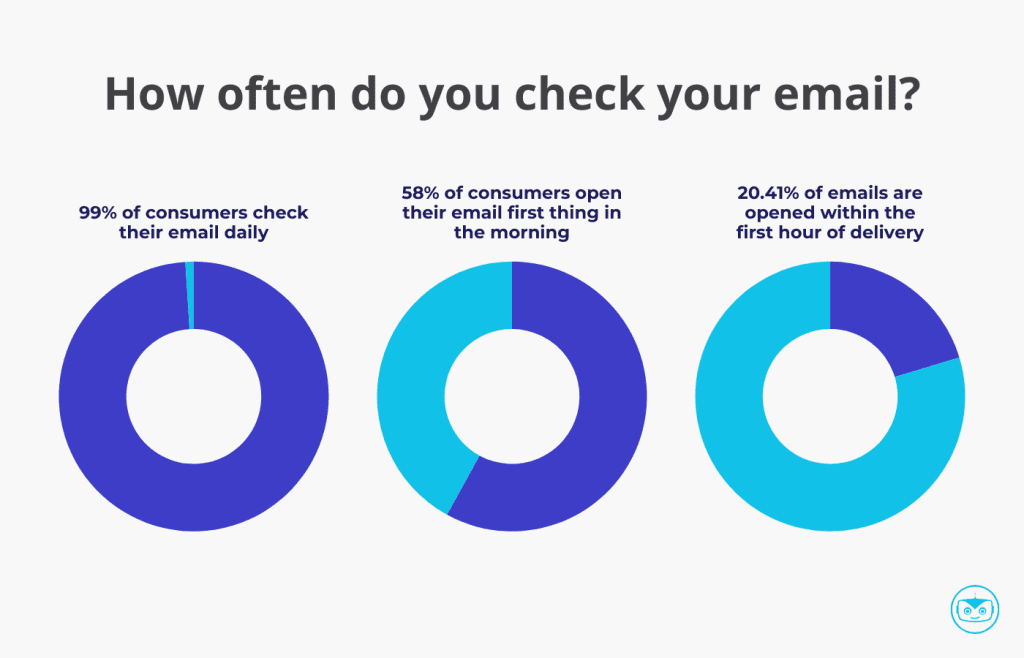
Use automation to set up a sequence of emails that guide prospects through the customer journey, from awareness to conversion, while adjusting the frequency to avoid overwhelming your subscribers.
9. Cold emails with personalized subject lines are more likely to be opened compared to generalized ones.
Source: Email Tool Tester, 2024
Personalization is a powerful tool in email marketing. Cold emails with personalized subject lines are significantly more likely to be opened, which means your messages are more likely to be read.
Use personalization in subject lines and throughout your email content, addressing recipients by name and tailoring messages based on their past interactions with your brand. This will help build trust and increase the likelihood of engagement.
10. The average click-through rate across industries is 3%.
Source: Cyberimpact’s State of Email Marketing Report
An average click-through rate (CTR) of 3% means that getting users to click on links in your emails can be challenging. However, certain industries see much higher CTRs.
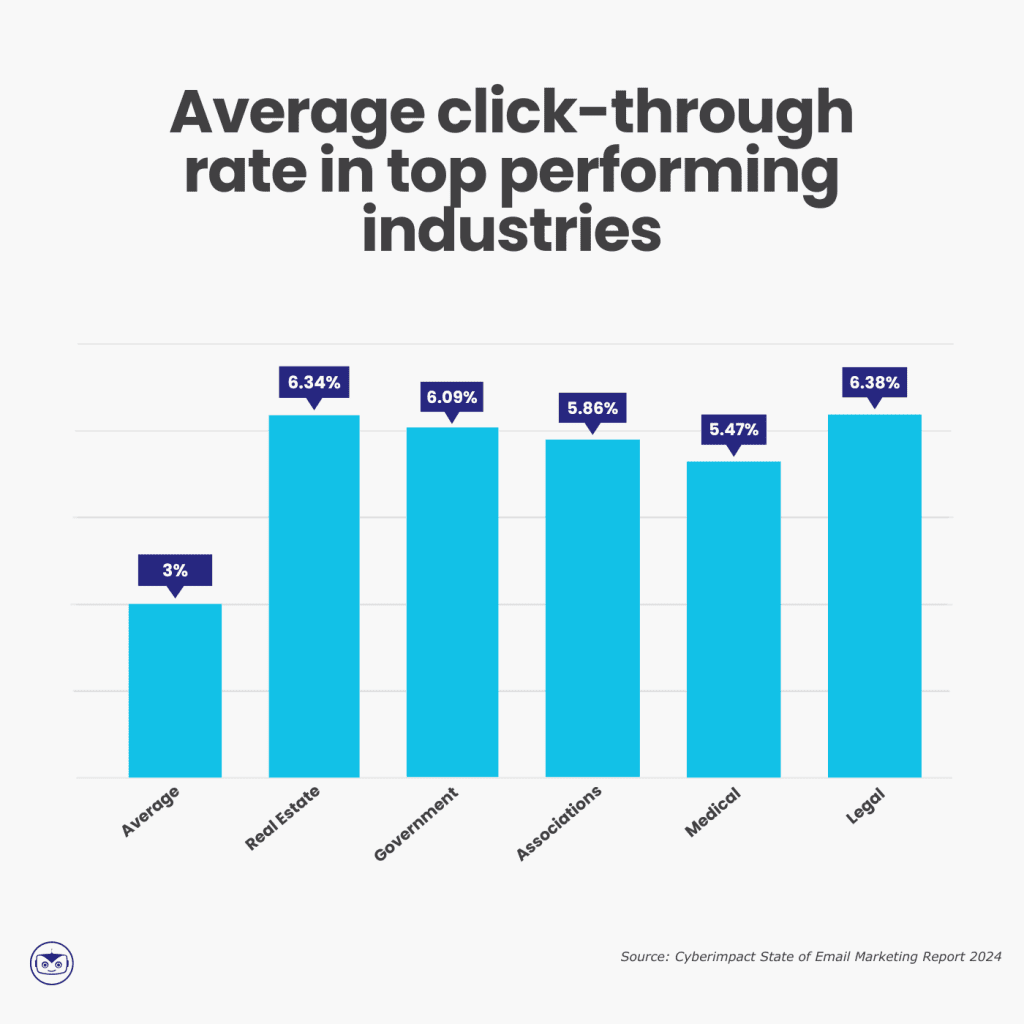
According to Cyberimpact’s State of Email Marketing Report, the average click-through rate across industries in Canada is 3%. The top-performing industries when it comes to click-through rate are Legal (6.38%), Real Estate and Construction (6.34%), Government (6.09%), Associations (5.86%) and Medical (5.47%) industries.
Learning how your average CTR compares to others in your industry is extremely valuable. It helps you pivot your strategy, adjust your KPIs (key-performance indicators) and take steps to improve your email marketing statistics.
11. 50% of people will delete an email if it’s not optimized for mobile.
Source: Mapp, 2016
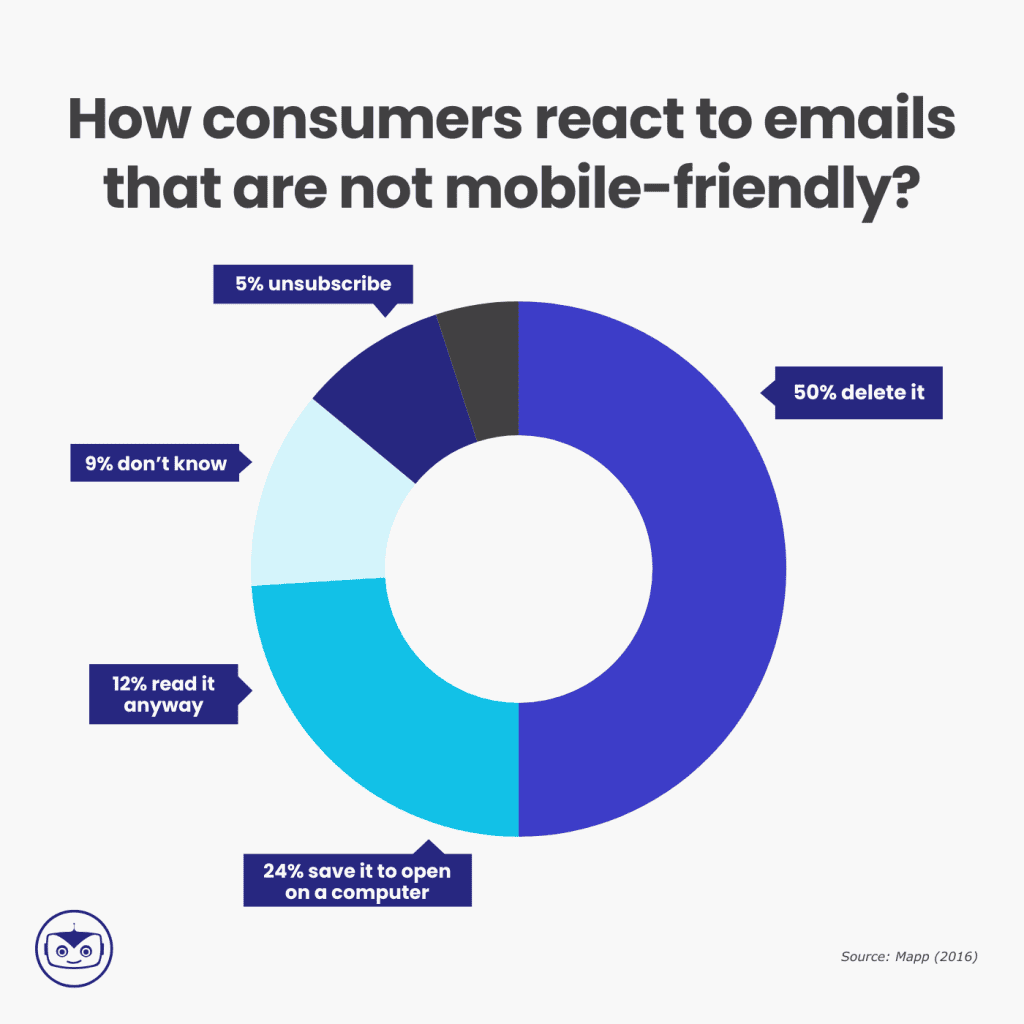
With 50% of people deleting emails that aren’t mobile-optimized, you can’t afford to ignore mobile users. Make sure your emails load quickly, are easy to read on small screens, and have buttons that are easy to click.
A common mistake businesses make is to create image-only emails. Although they seem appealing, those type of campaigns can harm your client experience on mobile.
12. 52.9% of marketers say their segmented emails have better open rates.
Source: HubSpot Survey
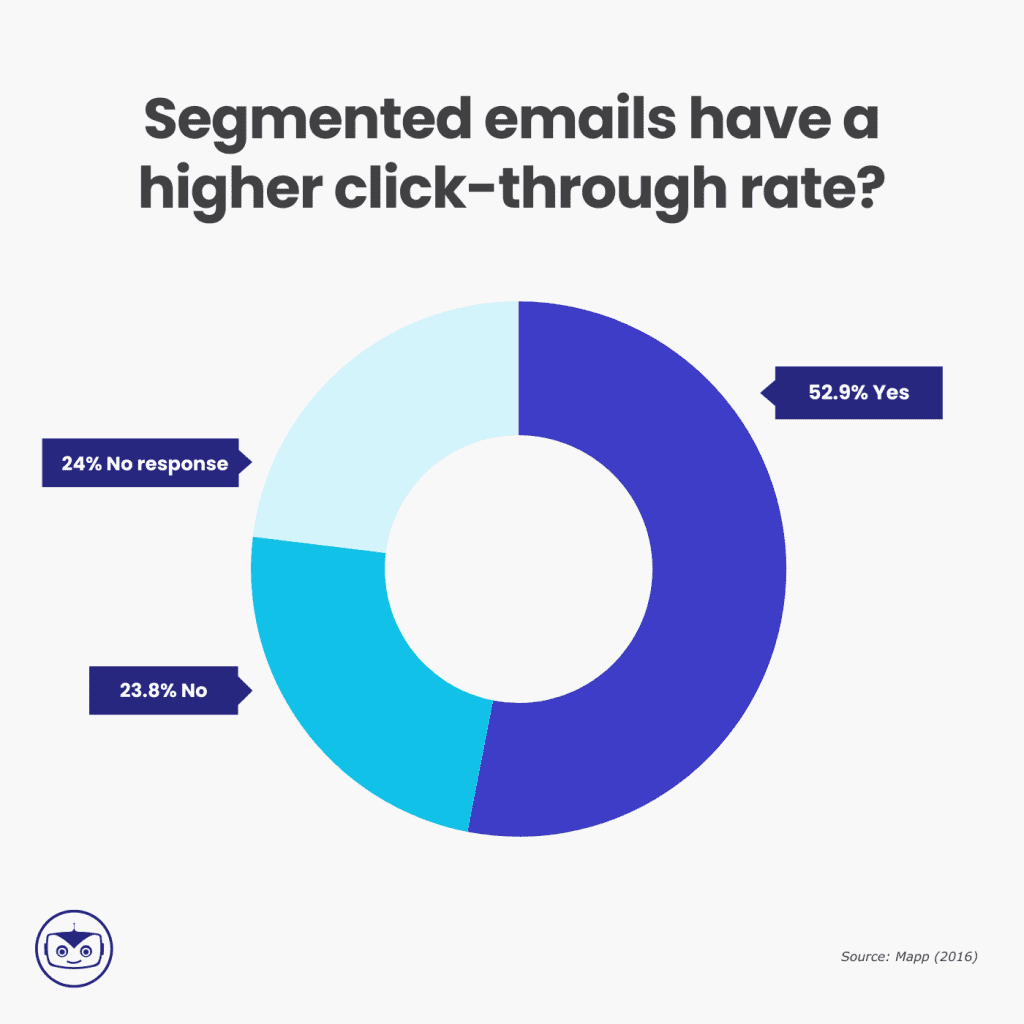
By grouping your audience based on factors such as location, age group, or behaviour on past campaigns, you can send more relevant content that resonates with each segment.
This targeted approach leads to higher open rates, improved engagement, and more conversions. Use marketing automation to manage segmentation and deliver personalized content at scale.
Conclusion
Businesses can significantly enhance their email marketing efforts by having access to email marketing statistics that support their strategy. Focusing on personalization, mobile optimization, and strategic timing are essential. Features like email marketing automation and segmentation are essential to manage these tactics efficiently.
With the right approach, email marketing can be a powerful tool for building relationships, driving sales, and growing your brand.
